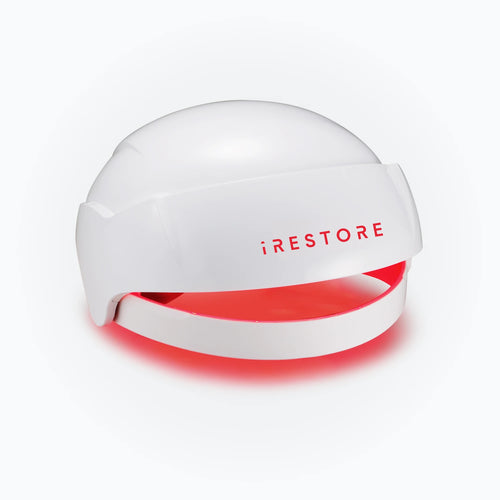Finding a few hairs in your brush or on your pillow can feel worrying, but in most cases, it is completely normal. According to dermatologists and trichologists, the average person loses 50 to 100 strands of hair per day. While this may sound like a lot, it is only a tiny fraction compared to the 100,000 follicles on the scalp.
The challenge is that ‘normal’ shedding isn’t always easy to identify. A few extra strands during stressful weeks or seasonal changes can seem alarming, even though they may be perfectly natural. In contrast, certain patterns of loss such as widening parts or more noticeable thinning may signal something more significant.
How Much Hair Shedding Is Normal?
Noticing strands of hair on your pillow, in the shower, or tangled in your brush can be unsettling. For many, it sparks an immediate question: “Am I losing too much hair?” The truth is, hair shedding is a natural part of life. On average, a person sheds between 50 and 100 hairs each day. Just like our skin renews itself, our hair also goes through continuous cycles of growth and renewal.
How much hair you notice also depends on your habits and hair type.
For example:
-
Longer or thicker hair appears to shed more
-
Shampooing or brushing releases hairs that were already loose
-
Seasonal changes, stress, or diet shifts may cause temporary increases
Most of the time, this shedding is normal and balances out naturally. But sometimes, hair loss can go beyond the usual cycle.
Normal Shedding vs. Excessive Hair Loss
|
Normal Shedding |
Excessive Hair Loss |
|
50–100 hairs daily |
Sudden or sustained increase in daily loss |
|
Even shedding across scalp |
Thinning in certain areas (crown, hairline, widening part) |
|
Ponytail thickness remains the same |
Ponytail feels smaller over time |
|
Hair strands stay strong |
Hair becomes weaker, thinner, or brittle |
|
Temporary (seasonal, stress, diet) |
Persistent or patterned, often progressive |
When to Pay Attention
If you notice clumps of hair on your pillow, a shrinking ponytail, or bald patches, it may signal thinning rather than routine shedding. While occasional shedding is part of the body’s renewal process, persistent or patterned hair loss deserves closer attention and professional guidance.
Recognizing the difference helps you avoid unnecessary worry when shedding is normal and take action when it is not. Safe and effective solutions are available to help you manage hair loss with confidence.
Safe and Easy Ways to Support Hair Growth
For many people, the idea of treating hair loss brings to mind transplants, prescription medications, or harsh topical formulas. While these options can be effective, they are not always the right fit for everyone. Some carry side effects, others come with high costs, and most require ongoing use. Fortunately, advancements in modern science have made gentler, non-invasive alternatives available.
One such approach is low-level light therapy (LLLT), a treatment that uses therapeutic red light to stimulate hair follicles. Research shows that this light can help improve blood flow, enhance cellular activity, and encourage dormant follicles to re-enter the growth phase. Because it works at a cellular level rather than altering hormones or requiring surgery, it is considered a safe and drug-free option.
Devices such as iRESTORE, which are FDA-cleared for use at home, make this technology accessible to the everyday user. Clinical studies on LLLT have demonstrated encouraging results, with participants reporting improvements in both the density and quality of their hair after regular use.
While no single solution works for everyone, LLLT represents an evidence-based, non-invasive path for those seeking to manage thinning hair. For people looking to explore treatment options beyond medication or surgery, light therapy offers a practical and science-backed alternative.
The Role of Community Support
Hair loss affects more than just your appearance; it often influences how you feel about yourself. Many people experience a drop in confidence, hesitation in social situations, or even anxiety about how they are perceived. While treatments can address the physical side of hair loss, emotional support plays an equally important role in the journey.
Being part of a community helps reduce the sense of isolation. Sharing experiences, discussing what has or has not worked, and celebrating milestones can transform what feels like a private struggle into a shared experience. Even small moments of progress, such as noticing less shedding or seeing thicker regrowth, become more meaningful when they are shared with others.
iRESTORE’s user network illustrates the power of this kind of support. Loved by more than 500K customers worldwide, the community offers encouragement, real stories, and inspiration for those beginning their hair restoration journey. Knowing that you are not alone can make every step toward healthier, fuller hair more empowering.
Moving Forward With Confidence
Hair shedding is a natural and necessary part of the hair growth cycle. Most people lose between 50 and 100 strands each day, and this process helps the scalp renew itself. The important thing is to understand the difference between normal shedding and hair loss that signals a deeper issue. Occasional increases, such as after stress or seasonal changes, are common. However, consistent thinning, bald patches, or noticeable changes in hair texture and density are signs worth paying closer attention to.
By learning what is normal for your hair and knowing when changes require further evaluation, you can take a more informed and confident approach to your hair health. Confidence restored!
FAQs
-
When should I worry about hair loss?
If you notice sudden shedding, thinning at the crown, a widening part, bald patches, or weaker hair quality, it may be time to seek expert advice. -
Can stress or seasonal changes cause more hair shedding?
Yes, temporary factors like stress, diet shifts, illness, or seasonal changes can increase shedding, but this usually balances out on its own. -
What is the difference between shedding and hair thinning?
Shedding means old hairs are naturally falling out, while thinning suggests your follicles are weakening and fewer new hairs are growing back. -
What non-invasive treatments are available for hair loss?
Low-level light therapy (LLLT) devices like iRestore are FDA-cleared, drug-free, and can help stimulate follicles to support hair regrowth. -
How long does it take to see results from iRESTORE or LLLT?
Most people start noticing visible improvements in hair thickness and growth within 3 to 6 months of consistent use.
Disclaimer: The iRESTORE blog is for informational purposes only and is not intended to replace professional medical advice or treatment. Please do not ignore professional guidance because of information you’ve read here. If you have concerns about your hair or skin health, we encourage you to consult a qualified healthcare professional.



















